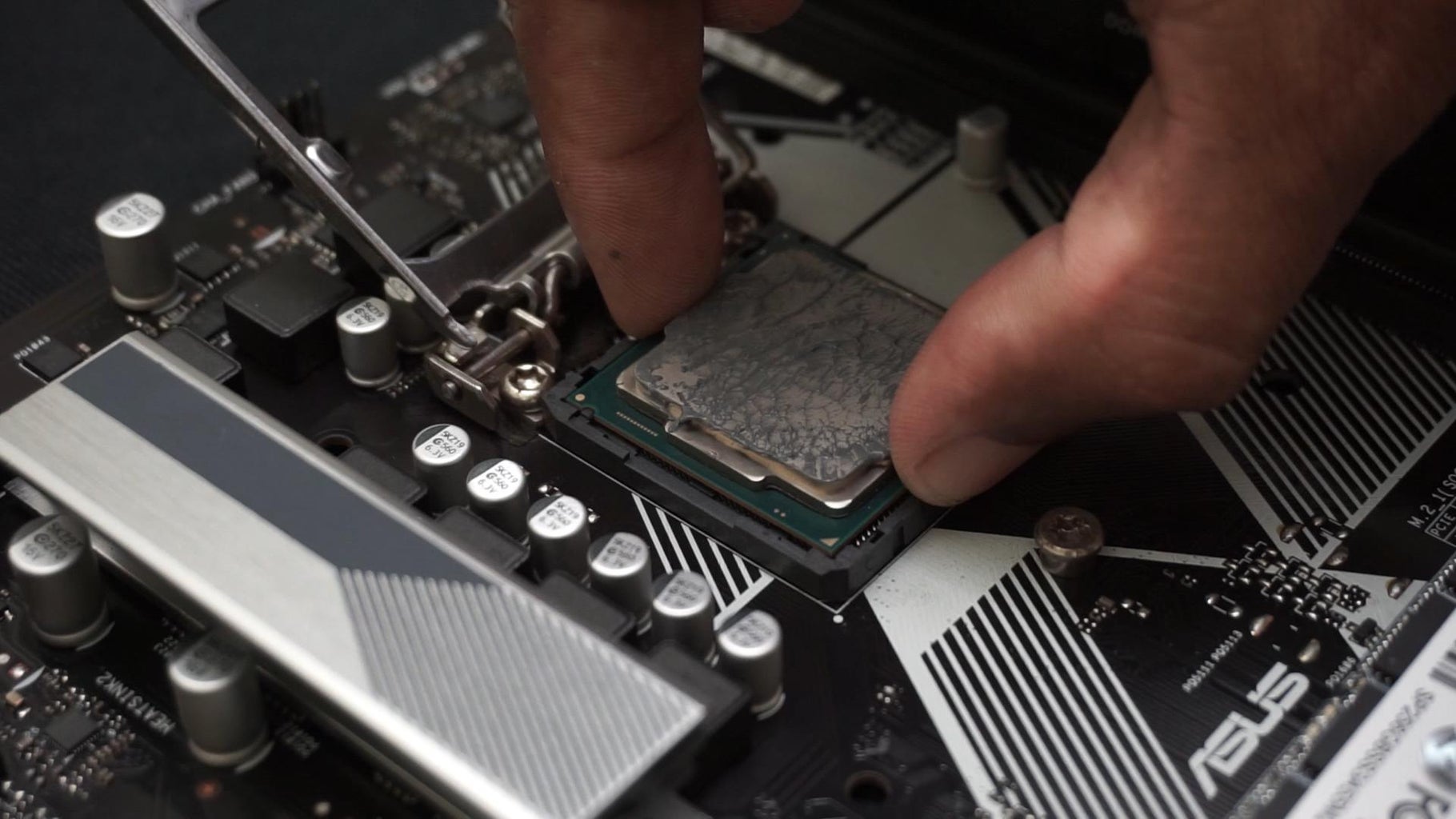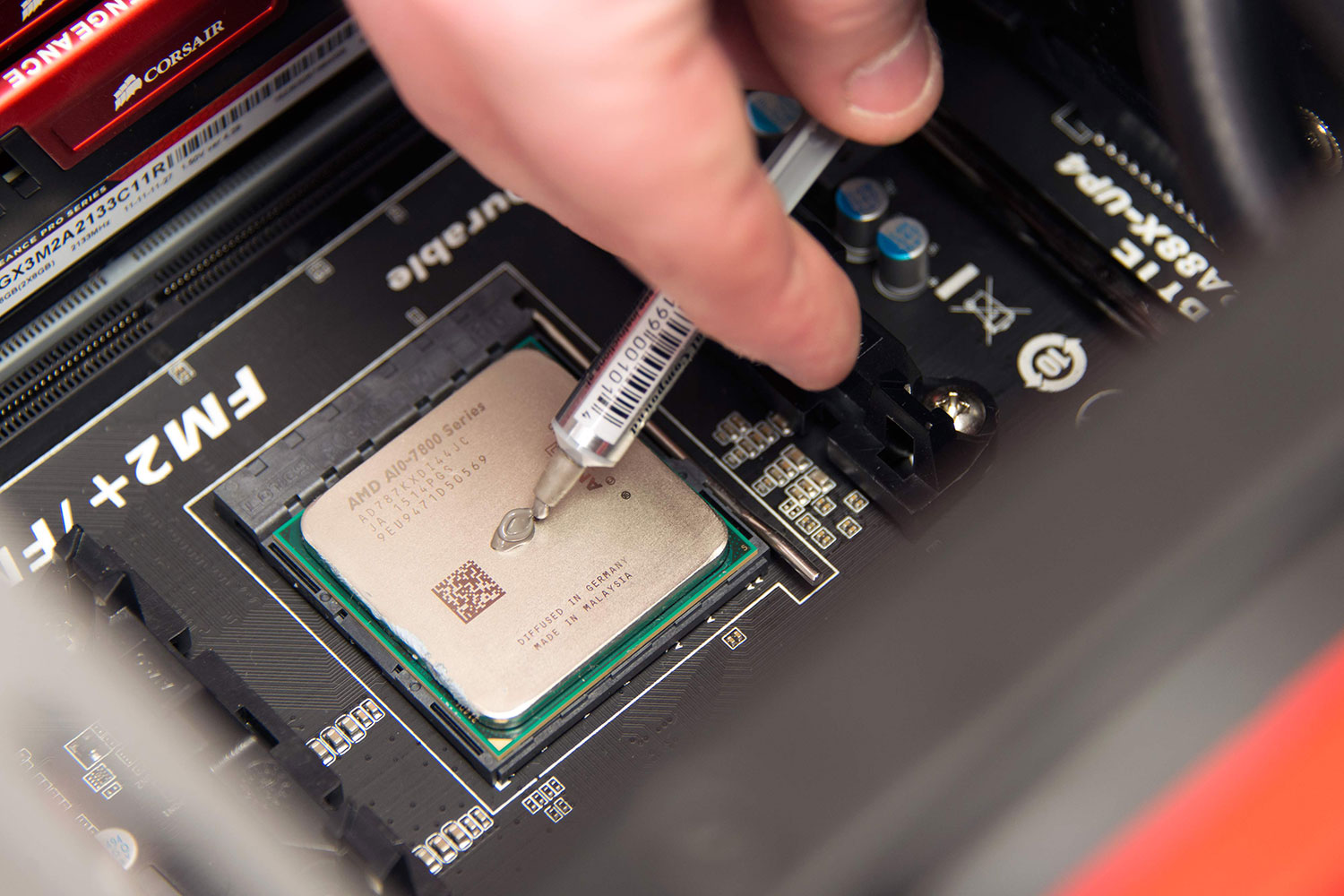Thermal paste is a crucial component in keeping your computer running efficiently. However, over time, it can build up and make its way onto the delicate pins of your CPU. This can cause issues with heat transfer and potentially damage your hardware.
In this article, we will discuss the best methods for removing thermal paste from CPU pins, ensuring that your computer stays in top shape.
Contents
Why is it Important to Remove Thermal Paste from CPU Pins?
Before diving into the process of removing thermal paste from CPU pins, it’s important to understand why it’s necessary in the first place. As mentioned earlier, thermal paste helps conduct heat away from your CPU, allowing it to operate at optimal temperatures. However, if excess thermal paste makes its way onto the pins, it can act as an insulator, preventing proper heat transfer and leading to overheating.
Additionally, too much thermal paste can cause the pins to stick together, making it difficult to properly insert the CPU back into the socket. Therefore, regular maintenance and cleaning of thermal paste from CPU pins is crucial for the longevity and performance of your computer.
Supplies You Will Need
Before starting the process of removing thermal paste from CPU pins, it’s essential to gather all the necessary supplies. Here’s a list of items you will need:
Soft Cloth or Cotton Swabs
A soft cloth or cotton swabs are ideal for gently wiping away the thermal paste from the pins without causing any damage.
90% Isopropyl Alcohol
Isopropyl alcohol is an excellent cleaner for electronics as it evaporates quickly and leaves no residue behind. You can purchase it at most drug stores.
Non-Abrasive Cleaning Solution
In case you don’t have isopropyl alcohol on hand, a non-abrasive cleaning solution such as contact cleaner or electrical contact cleaner will also work.
Thermal Paste Remover
If the thermal paste has hardened, you may need a specialized thermal paste remover to soften it and make it easier to remove.
Rubber Gloves
To protect your hands from any chemicals, it’s recommended to wear rubber gloves while handling cleaning solutions.
How to Remove Thermal Paste from CPU Pins
Now that you have all the necessary supplies, let’s dive into the process of removing thermal paste from CPU pins. Follow these steps carefully to avoid causing any damage to your hardware.
Step 1: Preparation
Before starting, make sure your computer is turned off, unplugged, and disconnected from any power source. This will prevent any electrical accidents or damage to your components.
Step 2: Removal of Excess Thermal Paste
Using a soft cloth or cotton swabs, gently wipe away any excess thermal paste from the CPU pins. Be careful not to apply too much pressure as this could bend or break the pins.
Step 3: Apply Cleaning Solution
Next, dip a cotton swab in either isopropyl alcohol or a non-abrasive cleaning solution and gently rub it over the pins. The solution will dissolve the thermal paste, making it easier to remove.
Step 4: Wipe Away Residue
Using a clean cloth, wipe away any remaining thermal paste and cleaning solution. You may need to use multiple cotton swabs to ensure all the residue is removed thoroughly.
Step 5: Repeat if Necessary
If there is still residue left on the pins, repeat the previous steps until they are completely clean.
Step 6: Clean CPU Socket
Once the pins are free of any thermal paste, use a can of compressed air to remove any debris or dust from the CPU socket. This will ensure proper contact between the pins and the CPU.
Other Methods for Removing Thermal Paste from CPU Pins
In some cases, the above method may not work, especially if the thermal paste has hardened. Here are some alternative methods you can try:
Use a Thermal Paste Remover
As mentioned earlier, if the thermal paste has hardened, it will be difficult to remove with just isopropyl alcohol. In this case, using a specialized thermal paste remover can make the process much easier.
Use a Credit Card or Plastic Spudger
If the above methods are not available, you can use a credit card or plastic spudger to carefully scrape off the thermal paste from the pins. Be extra careful not to bend or break any of the pins.
Conclusion
Removing thermal paste from CPU pins may seem like a daunting task, but with the right supplies and techniques, it can be done safely and effectively. Regular maintenance of thermal paste on your computer is crucial for optimal performance and the longevity of your hardware. Remember to always be gentle and careful when handling delicate components, and if you encounter any issues, it’s always best to seek professional help.

Information Security Asia is the go-to website for the latest cybersecurity and tech news in various sectors. Our expert writers provide insights and analysis that you can trust, so you can stay ahead of the curve and protect your business. Whether you are a small business, an enterprise or even a government agency, we have the latest updates and advice for all aspects of cybersecurity.






